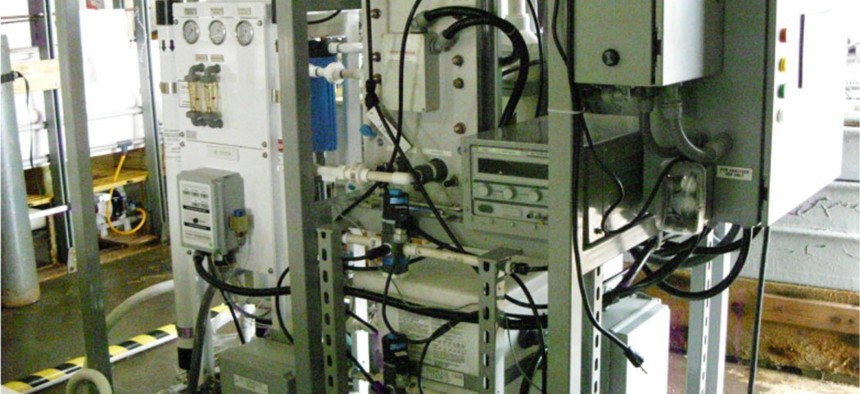NRL patents process for turning seawater into fuel
Researchers' E-CEM separates carbon dioxide and hydrogen and then produces liquid hydrocarbons for (still small) amounts of fuel.
The Naval Research Laboratory has been working on finding a nearly unlimited source of fuel—the sea—and now has the validation of a patent to show for it.
NRL’s Material Science and Technology Division has received a patent for its Electrolytic Cation Exchange Module (E-CEM), which separates carbon dioxide and hydrogen from seawater and then producing hydrocarbons to be used as fuel.
Tests of the process have to date been conducted on a small scale—in April 2014, E-CEM was used to create fuel of a scale model of the P-51 Mustang—but the process has the potential to scale up to practical applications, NRL said in a release.
“A ship's ability to produce a significant fraction of the battle group's fuel for operations at sea could reduce the mean time between refueling, and increase the operational flexibility and time on station,” said Cmdr. Felice DiMascio of the Naval Reserve, one of five contributors and inventors named on the patent. “Reducing the logistics tail on fuel delivery with the potential to increase the Navy's energy security and independence, with minimal impact on the environment, were key factors in the development of this program.”
NRL currently is scaling up its process to create larger amounts of fuel, although it’s still a long way from being able to power, say, a boat or a plane. “Building on the success of the first exchange module, we have scaled-up the carbon capture process to improve efficiency and substantially increase feedstock production,” said Dr. Heather Willauer, NRL research chemist. “Using a scaled-up, second generation E-CEM prototype, we will substantially increase CO2 and H2 production capable of producing up to one gallon of fuel per day, an increase nearly 40 times greater than with the earlier generation E-CEM.”
Researchers at NRL's Marine Corrosion Facility in Key West, Fla., are working to optimize the two processes involved in fuel production—the recovery of hydrogen and CO2, and their synthesis into hydrocarbons. NRL said it recently partnered with a commercial entity to test its catalyst as it switches from its initial small plug flow chemical reactor to a large-scale chemical reactor, and hopes to have the two processes working at Key West by the end of the year.
In addition to DiMascio and Willauer, the other researchers named on the patent are Dennis Hardy and Frederick Williams of NRL and Kathleen Lewis of the Office of Naval Research.




